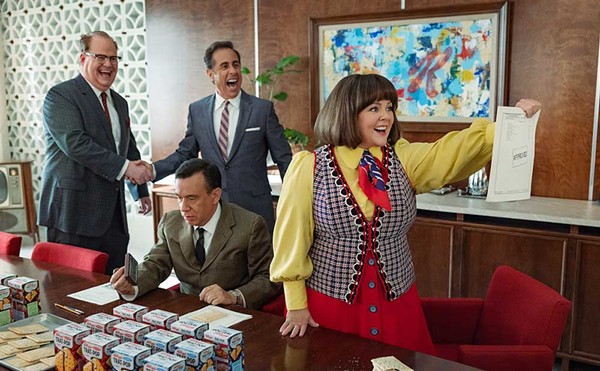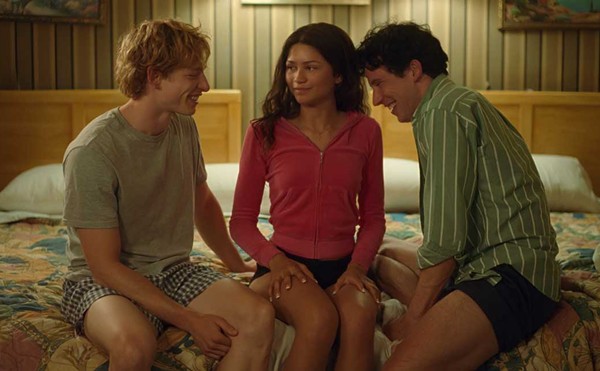Question: Can advertising be art?
Artists normally will say no, while marketing and ad directors will point to fine commercials and magazine ads and say yes. But when it comes to American Bellydancer, the question is somewhat moot. The film is essentially an infomercial that at times takes a stab at fine art, playing both with documentary and mockumentary styles. Essentially, it’s just an hour-and-a-half advertisement for a bellydance troupe that, in the end, will put you to sleep, as any super-long-format advertisement would — which is why infomercials run on late night cable and not in movie theaters.
But the star of American Bellydancer has connections. Producer Miles Copeland, a well-known pop music promoter, was manager of the Police back in the day and is the brother of the Police’s drummer, Stewart Copeland. As indicated in the film, the Copelands’ father was instrumental in starting the Central Intelligence Agency, which apparently gives Miles Copeland even more connections.
So now, Copeland has started a bellydancing troupe and, as he points out, selling the documentary American Bellydancer is part of the promotion for his new empire. Hawking instructional bellydance videos, clothing and Middle Eastern music is also part of the deal. It’s only somewhat surprising that those items aren’t offered for sale at the end of the film.
As the "documentary" begins, we learn that Copeland’s troupe, "Bellydance Superstars," is really a very coyly developed attempt to bridge Middle Eastern and American cultures. We see footage of a Muslim man praying, bombs, the president and the White House.
In an attempt at a mockumentary, we travel with Copeland as he and some of the female professionals that work for him debate whether he’s just pimping sexy women dancing sexy, and whether he cares about the true art of the dance. At one point his sales manager makes a crack that Copeland is only complying with certain things "for the documentary."
The women in Copeland’s troupe, whom he calls "girls," not dancers, are followed as they dance for the Chinese Lions Club and in Bali — but unfortunately the footage isn’t all that funny or interesting.
This is no Best in Show. It seems to lack the presence of not only an outside eye and outside voice, but also an editor. The only shining moments come from a bellydancer from down South, an older women who tells of her experience driving to dance for a man for $600. "He filled up my car with gas and offered to put me up in a hotel," she says. She also says she’s danced in grocery store meat departments, and that she met one of the 9/11 bombers, whom she describes as "just one of the guys." These anecdotes are never fleshed out or explained in any way, but clearly this woman is a story.
If only you could say as much for the rest of the film.
Showing at the Roseville Theatre (28325 Utica Rd., Roseville; 586-445-7810).
Lisa M. Collins writes about film for Metro Times. Send comments to [email protected].





